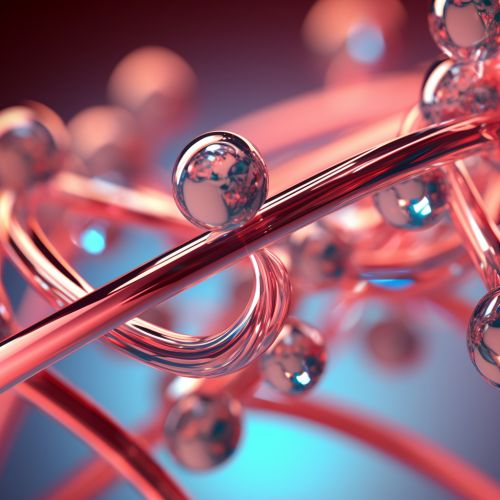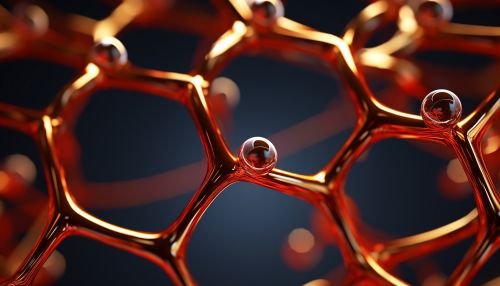Purine
Overview
Purines are a group of organic compounds that play crucial roles in the biochemistry of life. They are one of the two types of nitrogenous bases found in nucleic acids, the other being pyrimidines. Purines consist of a two-ring structure, comprising a six-membered pyrimidine ring fused to a five-membered imidazole ring. The most common purines are adenine (A) and guanine (G), which are fundamental components of deoxyribonucleic acid and ribonucleic acid.


Structure and Properties
Purines are characterized by their two-ring structure, which is composed of carbon and nitrogen atoms. The larger six-membered ring is a pyrimidine ring, while the smaller five-membered ring is an imidazole ring. This structure is planar and aromatic, meaning it is stable and has a ring of resonance. The purine structure is hydrophobic and tends to stack with other purines and pyrimidines in the nucleic acid structure, contributing to the stability of the DNA and RNA helices.
Biological Significance
Purines are vital to all life forms due to their role in the genetic code. The purines adenine and guanine are found in both DNA and RNA and pair with specific pyrimidines to form the rungs of the nucleic acid structures. In DNA, adenine pairs with thymine (T), and guanine pairs with cytosine (C). In RNA, adenine pairs with uracil (U), and guanine still pairs with cytosine.
Beyond their role in nucleic acids, purines also play key roles in cellular energy systems. Adenine forms part of adenosine triphosphate, the primary energy currency of the cell, as well as nicotinamide adenine dinucleotide and flavin adenine dinucleotide, which are crucial in oxidation-reduction reactions in the cell.
Synthesis and Metabolism
Purines are synthesized in the body through a complex pathway that involves multiple enzymes. The purine synthesis pathway starts with the formation of a ribose-5-phosphate molecule, which is then converted into 5-phosphoribosyl-1-pyrophosphate (PRPP). The purine ring is then built up on this molecule through a series of reactions.
Purine metabolism involves the breakdown and recycling of purines. The end product of purine metabolism in humans is uric acid. Disorders of purine metabolism can lead to a variety of health problems, including gout and Lesch-Nyhan syndrome.
Disorders of Purine Metabolism
Disorders of purine metabolism are typically characterized by an overproduction or underproduction of uric acid. Gout, for instance, is caused by an overproduction of uric acid, leading to the formation of uric acid crystals in the joints, causing inflammation and pain. Lesch-Nyhan syndrome, on the other hand, is a genetic disorder characterized by an overproduction of purines due to a deficiency in the enzyme hypoxanthine-guanine phosphoribosyltransferase (HGPRT).
